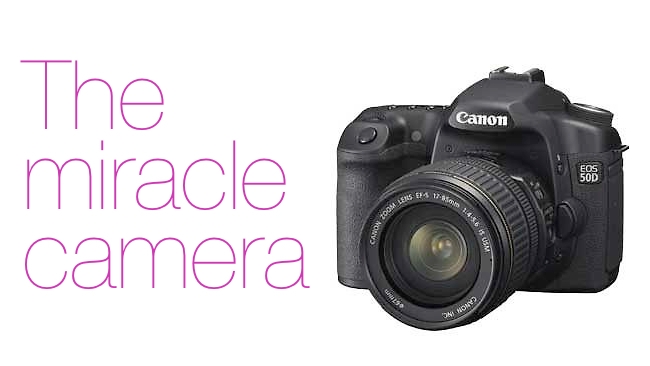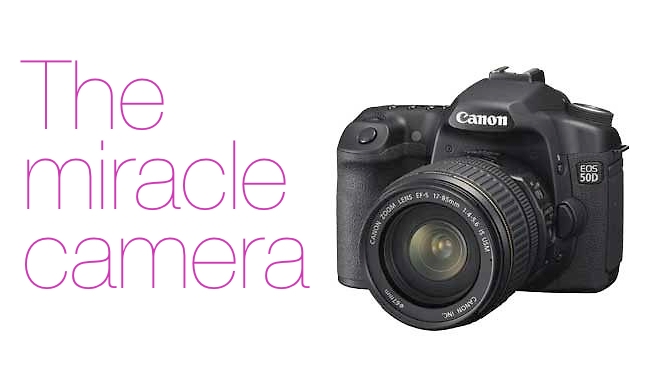
 The Miracle Camera
The Miracle Camera
The D50 was never meant to record video. But thanks to the almost unbelievable ingenuity of the Magic Lantern wizards, it does, and does it well. And now people are making accessories for it!
Just like anyone who bought Bitcoins about a year ago, anybody who bought an EOS-50D has arguably found themselves in possession of a deal of the century. One of the last Canon DSLRs to be released before the video-capable models emerged, the enterprising software engineers working on the Magic Lantern firmware add-on quickly discovered that it does, in fact, have pretty much all the hardware of the more recent models, and with firmware changes can be made to record video.
Let's just take a moment to consider this. Back in the day, we were lucky to hack our PAL Hi8 camcorders to record video input. Moving on a few years, we're taking a thing which is not a video camera and making it into one using free software. Now, the 50D is a significantly imperfect video camera, lacking any form of audio handling - there is no microphone - although this may be a non-issue on productions using dual system sound (though there is, of course, also no timecode provision). There's also the rather more tricky problem of aliasing, which I should probably talk about in a separate article given the amount of mailbag the subject generates. Objections to the early Canon DSLRs as video cameras mainly revolved around this concern and that of the h.264 codec, which, despite throwing an awful lot of bitrate at the problem, was never that great.
EOS 5D Magic Lantern-enabled footage
The codec issue has been quite effectively solved by Magic Lantern, whose research into the inner workings of the Canon EOS range revealed a way to dump the raw image data for each frame to the compact flash card, prior to compression, providing high-bit-depth raw recording which has produced some really staggeringly nice results on the 5D Mk. III. Sadly, however, there can be no software fix for the aliasing issues of older cameras, which are caused by design decisions now baked into the silicon of the sensor itself. You could buy a 5D Mk. III, of course, which has more or less fixed the aliasing issue, but they're about ten times as much money as a used 50D.
A potential alternative solution is presented by Mosaic Engineering, who have for some time been producing optical components including antialiasing filters for various applications, but particularly, of late, for Canon DSLRs. These have historically not been a perfect fix for people expecting unadulterated 1920x1080 images, making things look – inevitably – slightly soft. But it's difficult to lay these problems at Mosaic's door, because a lot of what appears to be sharpness and detail in the image of, say, a 5D Mk. II is in fact aliasing, and filtering it out will invariably contribute to an appearance of softness. This is a matter of opinion to some extent – the early EOS video-capable DSLRs were never really capable of meaningful 1080p in the first place – but it's worth bearing in mind. One of the reasons I'm going to the lengths of writing this piece now, without having tested the thing, is that more than a few videos demonstrating this and others in Mosaic's antialiasing filter range are getting a lot of online footfall and the issue of perceived sharpness is not often being discussed in the context of the technical realities. Ultimately this can be a bit unfair on Mosaic, who, if they're doing their job, will only make these cameras look as soft as they always really were.
On one hand, I'd question the idea of spending, say, $500 on a used 50D, and then $295 on the antialiasing filter, to end up with a camera of limited sharpness, no audio, and having spent the vast majority of the cost of a Blackmagic Pocket Cinema Camera. On the other, if you're already an enthusiastic 50D owner-operator, the option to improve its performance may be welcome. Given how many 50Ds have been snapped up cheap to be video cameras, I suspect Mosaic may do quite well.
Illustration of the Mosaic Anti Aliasing filter at work
Read: The best Magic Lantern footage we've ever seen
Tags: Technology


Comments